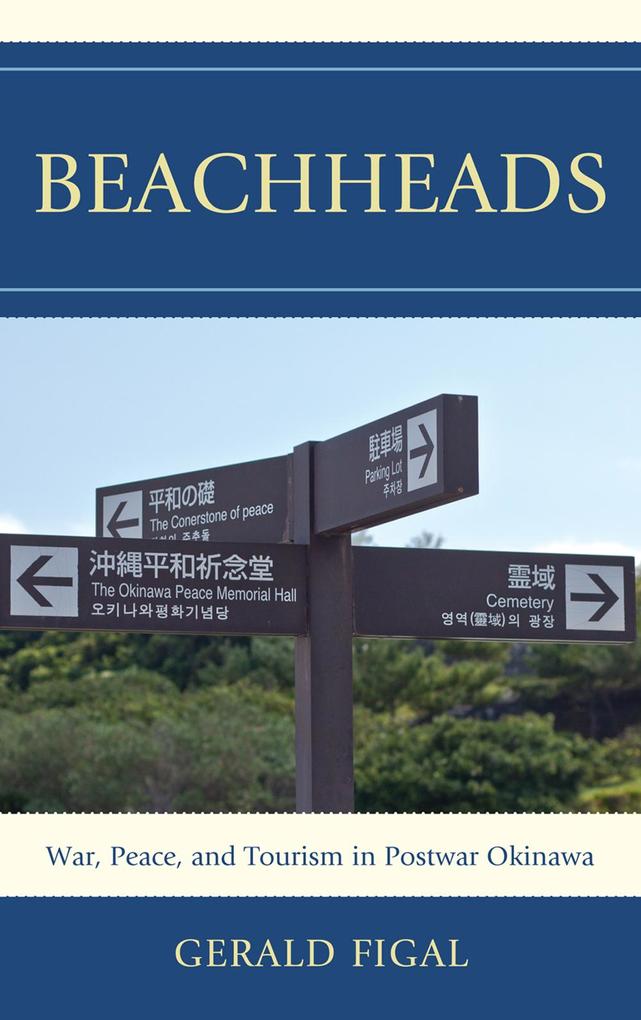
Zustellung: Mo, 16.06. - Sa, 21.06.
Versand in 3-4 Wochen
VersandkostenfreiBestellen & in Filiale abholen:
This original and fresh book explores Okinawa's makeover as a tourist mecca in the long historical shadow and among the physical ruins of the Pacific War's most devastating land battle. Gerald Figal considers how a place burdened by a history of semicolonialism, memories of war and occupation, economic hardship, and contentious current political affairs has reshaped itself into a resort destination. He traces cultural, political, social, and economic issues of Okinawa's postwar experience to the present through the innovative frame of tourism development--both as it has been imagined and, in some cases, realized. Creatively, accessibly, and eloquently written, this compelling work highlights a set of islands that represent key issues facing contemporary Japan.
Inhaltsverzeichnis
Prologue
Part I: Graves and Caves
Chapter 1: Tours among the Ruins
Chapter 2: The Touristification of Sacred Ground
Part II: Creations and Recreations
Chapter 3: "Tropical Image Up": Landscape under (Tourist) Occupation
Chapter 4: Ryukyu Restoration: Shuri Castle and Furusato Okinawa
Part III: Bases and Beaches
Chapter 5: Military Bases as Tourist Attraction
Chapter 6: Beach Resort Invasion
Epilogue
Bibliography
Part I: Graves and Caves
Chapter 1: Tours among the Ruins
Chapter 2: The Touristification of Sacred Ground
Part II: Creations and Recreations
Chapter 3: "Tropical Image Up": Landscape under (Tourist) Occupation
Chapter 4: Ryukyu Restoration: Shuri Castle and Furusato Okinawa
Part III: Bases and Beaches
Chapter 5: Military Bases as Tourist Attraction
Chapter 6: Beach Resort Invasion
Epilogue
Bibliography
Mehr aus dieser Reihe
Produktdetails
Erscheinungsdatum
12. April 2012
Sprache
englisch
Seitenanzahl
276
Reihe
Asia/Pacific/Perspectives
Autor/Autorin
Gerald Figal
Verlag/Hersteller
Produktart
gebunden
Gewicht
522 g
Größe (L/B/H)
231/155/25 mm
ISBN
9781442215818
Entdecken Sie mehr
Pressestimmen
Tourism is rarely, if ever, 'innocent,' as Gerald Figal reveals in this provocative and probing study of tourism in Okinawa. Rather, it is invariably intertwined with the history of both the tourist's homeland and destination. Nowhere is this more evident than in Okinawa, where even the most remote, pristine beaches serve as repositories of the past-a past in which the dark legacies of colonialism, war, and military occupation lurk beneath the brilliant sunlight. -- Michael Molasky, Hitotsubashi University (Tokyo) Born in the ruins of war, Okinawa had been the site of the Asia-Pacific War's bloodiest battle. To this day, it remains the site of intense contestation regarding the U.S. military presence. Yet, Okinawa has also become a tourist destination whose attractions range from recently introduced forms of tropical leisure to rich cultural displays and a live experience of an imagined past. Gerald Figal expertly examines the enormous tension between these two identities of 'Okinawa.' He brilliantly shows not only the constructedness of Okinawa as tropical paradise but also the tourist appeal of the U.S. military in Okinawa, from the spectacle of the bases and their hardware to the personnel themselves. A benchmark book for readers interested in civil-military relations, war and peace, and modern Japan and Okinawa. -- Sabine Fruhstuck, University of California, Santa Barbara With its triangulated position at the crossroads of Japan, the US, and its own past kingdom, contemporary Okinawa provides observers with richly complex material. Figal (Vanderbilt Univ.) handles this material well. Based on archival research and fieldwork begun in 2001, his book provides fascinating insights into the branding of Okinawa for the Japanese domestic tourist marketplace, from tropical landscaping to the restoration of Shuri Castle (the former center of the Ryukyuan Kingdom) to the building of swank resorts. In working to create a distinctive brand, the tourist industry sought elements that would make Okinawa distinctive within the Japanese domestic tourist market. Those elements included a tropical image ("Japan's Hawai'i") and continuing connection to the US through the ongoing US military presence. Thus, tropical beaches and US bases are not such uncommon bedfellows in Okinawa. They constitute what Figal calls "beachheads"--luxury resorts capable of launching their own offense against Okinawan physical and cultural space. Embedding the making of "tourist Okinawa" within the experiences of wartime and US occupation, Figal's compelling analysis greatly enriches the growing field of Okinawan studies. Summing Up: Highly recommended. CHOICE
Bewertungen
0 Bewertungen
Es wurden noch keine Bewertungen abgegeben. Schreiben Sie die erste Bewertung zu "Beachheads" und helfen Sie damit anderen bei der Kaufentscheidung.


































